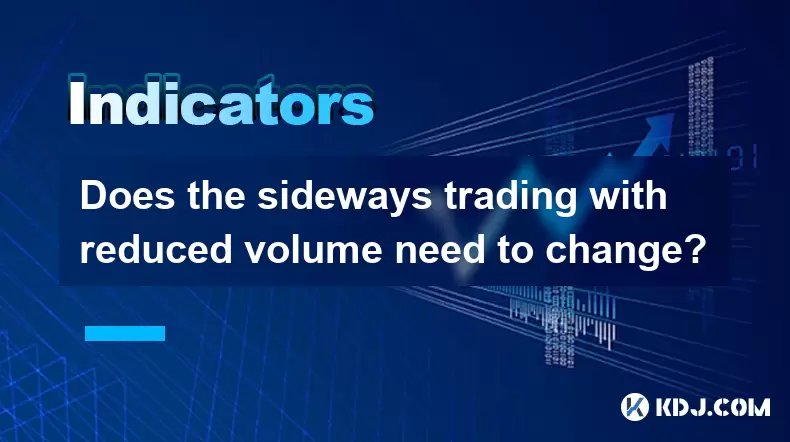-
 Bitcoin
Bitcoin $119000
-2.21% -
 Ethereum
Ethereum $4315
1.01% -
 XRP
XRP $3.151
-3.11% -
 Tether USDt
Tether USDt $0.0000
0.00% -
 BNB
BNB $808.5
-0.71% -
 Solana
Solana $175.8
-4.21% -
 USDC
USDC $0.9999
0.00% -
 Dogecoin
Dogecoin $0.2250
-3.92% -
 TRON
TRON $0.3469
1.77% -
 Cardano
Cardano $0.7818
-3.81% -
 Chainlink
Chainlink $21.47
-2.10% -
 Hyperliquid
Hyperliquid $43.30
-6.81% -
 Stellar
Stellar $0.4370
-2.84% -
 Sui
Sui $3.682
-4.40% -
 Bitcoin Cash
Bitcoin Cash $590.8
2.67% -
 Hedera
Hedera $0.2484
-5.20% -
 Ethena USDe
Ethena USDe $1.001
0.00% -
 Avalanche
Avalanche $23.10
-4.29% -
 Litecoin
Litecoin $119.2
-3.96% -
 Toncoin
Toncoin $3.409
0.90% -
 UNUS SED LEO
UNUS SED LEO $9.016
-1.29% -
 Shiba Inu
Shiba Inu $0.00001304
-3.82% -
 Uniswap
Uniswap $11.18
1.33% -
 Polkadot
Polkadot $3.913
-3.51% -
 Cronos
Cronos $0.1672
-3.08% -
 Dai
Dai $1.000
0.02% -
 Ethena
Ethena $0.7899
-4.70% -
 Bitget Token
Bitget Token $4.400
-1.23% -
 Pepe
Pepe $0.00001132
-5.93% -
 Monero
Monero $257.9
-6.44%
Does the sideways trading with reduced volume need to change?
Sideways trading with reduced volume in crypto can be a time for long-term investors to buy low, while short-term traders may find it less profitable due to limited volatility.
Jun 08, 2025 at 09:08 pm

In the world of cryptocurrencies, sideways trading with reduced volume is a phenomenon that traders and investors often encounter. This situation occurs when the price of a cryptocurrency moves within a narrow range without significant upward or downward movements, and the trading volume decreases. Understanding whether this pattern needs to change is crucial for making informed trading decisions.
Understanding Sideways Trading
Sideways trading, also known as horizontal trading, is characterized by a lack of clear direction in the price movement. The price oscillates between a support level and a resistance level, forming what is often referred to as a trading range or channel. This pattern can persist for days, weeks, or even months, depending on various market factors.
When trading volume decreases during this period, it indicates that fewer traders are participating in the market. Reduced volume can signal a lack of interest or conviction among traders, which can lead to a period of consolidation before a significant price move occurs.
The Impact of Sideways Trading on Investors
For investors, sideways trading with reduced volume can be both a challenge and an opportunity. On one hand, it can be frustrating to see the value of their holdings stagnate. On the other hand, it provides a chance to reassess their investment strategy and prepare for potential future movements.
During such periods, long-term investors might view the sideways movement as a time to accumulate more of the cryptocurrency at a stable price. They may see it as an opportunity to buy at a lower price before a potential breakout occurs. Short-term traders, however, might find the lack of volatility less appealing, as it limits their ability to profit from quick price movements.
Analyzing the Need for Change
The question of whether sideways trading with reduced volume needs to change depends on several factors. One key consideration is the market sentiment. If the overall sentiment in the cryptocurrency market is positive, a period of sideways trading might be seen as a healthy consolidation before a new upward trend. Conversely, if the sentiment is negative, the lack of movement could signal a lack of confidence and might precede a downward trend.
Another factor to consider is the fundamental analysis of the cryptocurrency. If the underlying project or technology behind the cryptocurrency continues to show promise and development, the sideways trading might be a temporary phase before the market recognizes its value and pushes the price higher.
Strategies for Trading During Sideways Movement
Traders can employ various strategies to navigate sideways trading with reduced volume. Here are some approaches:
Range Trading: This strategy involves buying near the support level and selling near the resistance level within the trading range. Traders can take advantage of the predictable price movements to generate profits.
Breakout Trading: Some traders wait for a breakout from the trading range. They monitor the price closely and prepare to enter a position when the price breaks above the resistance or below the support level. This strategy requires patience and a keen eye for market signals.
Using Technical Indicators: Technical indicators such as the Relative Strength Index (RSI), Moving Averages, and Bollinger Bands can help traders identify potential entry and exit points during sideways trading. These tools can provide insights into the strength and direction of the price movement.
The Role of Volume in Sideways Trading
Volume plays a crucial role in understanding the dynamics of sideways trading. When volume is low, it suggests that the current price level is not attracting significant buying or selling interest. This can lead to a continuation of the sideways movement until a catalyst emerges to change the market dynamics.
However, if volume starts to increase during sideways trading, it could signal an impending breakout. Traders often look for an increase in volume as a confirmation signal that a significant price move is about to occur. This can help them make more informed trading decisions and potentially capitalize on the new trend.
Monitoring Market Catalysts
Market catalysts are events or news that can trigger a change in the price movement of a cryptocurrency. These can include regulatory announcements, technological developments, partnerships, or macroeconomic factors. During periods of sideways trading with reduced volume, traders should stay informed about potential catalysts that could break the current pattern.
For instance, if a major cryptocurrency exchange announces the listing of a new token, it could lead to increased trading volume and a potential price breakout. Similarly, positive developments in the underlying technology of a cryptocurrency could attract new investors and drive the price higher.
Conclusion
In conclusion, sideways trading with reduced volume is a common occurrence in the cryptocurrency market. Whether this pattern needs to change depends on various factors, including market sentiment, fundamental analysis, and the presence of market catalysts. Traders and investors can employ different strategies to navigate this period and potentially profit from future price movements.
Frequently Asked Questions
Q: How can I identify a sideways trading pattern?
A: To identify a sideways trading pattern, look for a price chart where the price moves within a defined range between a clear support level and a resistance level. The price will oscillate between these levels without making significant upward or downward breaks. Additionally, check the trading volume to see if it is lower than usual during this period.
Q: What are some common indicators used to predict a breakout from sideways trading?
A: Some common indicators used to predict a breakout from sideways trading include the Relative Strength Index (RSI), Moving Averages, and Bollinger Bands. An RSI moving out of the overbought or oversold zones, a crossover of Moving Averages, or a price touching the upper or lower Bollinger Band can signal an impending breakout.
Q: How does market sentiment affect sideways trading?
A: Market sentiment plays a significant role in sideways trading. Positive sentiment can lead to a period of consolidation before a new upward trend, while negative sentiment might indicate a lack of confidence and precede a downward trend. Monitoring sentiment indicators and news can help traders gauge the potential direction of the market.
Q: Can sideways trading with reduced volume last indefinitely?
A: While sideways trading with reduced volume can persist for an extended period, it is unlikely to last indefinitely. Eventually, a catalyst or change in market dynamics will trigger a breakout, leading to a new trend. Traders should remain vigilant and prepared for potential changes in the market environment.
Disclaimer:info@kdj.com
The information provided is not trading advice. kdj.com does not assume any responsibility for any investments made based on the information provided in this article. Cryptocurrencies are highly volatile and it is highly recommended that you invest with caution after thorough research!
If you believe that the content used on this website infringes your copyright, please contact us immediately (info@kdj.com) and we will delete it promptly.
- Arc Blockchain: Circle's Layer-1 Play Amidst $428 Million Loss
- 2025-08-12 20:30:13
- XRP Price: Riding the Bull Cycle Wave or Hitting a Wall?
- 2025-08-12 20:50:12
- Cloud Mining in 2025: Chasing Passive Income and High Returns
- 2025-08-12 20:30:13
- Solana Price, Meme Coins, and 100x Gains: What's the Hype?
- 2025-08-12 20:50:12
- Japan, Bitcoin, and Treasuries: A New Era of Corporate Finance?
- 2025-08-12 18:30:12
- Bitcoin Bull Market: Decoding the Indicators for the Next Big Move
- 2025-08-12 18:30:12
Related knowledge

What does it mean when the +DI and -DI cross frequently in the DMI indicator but the ADX is flattening?
Aug 11,2025 at 03:15am
Understanding the DMI Indicator ComponentsThe Directional Movement Index (DMI) is a technical analysis tool composed of three lines: the +DI (Positive...

What does it mean when the moving average, MACD, and RSI all send buy signals simultaneously?
Aug 11,2025 at 01:42pm
Understanding the Convergence of Technical IndicatorsWhen the moving average, MACD, and RSI all generate buy signals at the same time, traders interpr...

What does it mean when the price is trading above the SAR indicator but the red dots are densely packed?
Aug 09,2025 at 11:49pm
Understanding the SAR Indicator and Its Visual SignalsThe SAR (Parabolic Stop and Reverse) indicator is a technical analysis tool used primarily to de...

What does it mean when the candlestick chart forms a "Morning Star" but trading volume is sluggish?
Aug 12,2025 at 06:28pm
Understanding the Morning Star Candlestick PatternThe Morning Star is a three-candle bullish reversal pattern commonly observed in cryptocurrency pric...

What does it mean when the RSI indicator moves sideways for an extended period between 40 and 60?
Aug 10,2025 at 08:08am
Understanding the RSI Indicator in Cryptocurrency TradingThe Relative Strength Index (RSI) is a momentum oscillator widely used in cryptocurrency trad...

What does it mean when the MACD histogram continues to shorten but the price reaches a new high?
Aug 09,2025 at 09:29pm
Understanding the MACD Histogram and Its ComponentsThe MACD (Moving Average Convergence Divergence) indicator is a widely used technical analysis tool...

What does it mean when the +DI and -DI cross frequently in the DMI indicator but the ADX is flattening?
Aug 11,2025 at 03:15am
Understanding the DMI Indicator ComponentsThe Directional Movement Index (DMI) is a technical analysis tool composed of three lines: the +DI (Positive...

What does it mean when the moving average, MACD, and RSI all send buy signals simultaneously?
Aug 11,2025 at 01:42pm
Understanding the Convergence of Technical IndicatorsWhen the moving average, MACD, and RSI all generate buy signals at the same time, traders interpr...

What does it mean when the price is trading above the SAR indicator but the red dots are densely packed?
Aug 09,2025 at 11:49pm
Understanding the SAR Indicator and Its Visual SignalsThe SAR (Parabolic Stop and Reverse) indicator is a technical analysis tool used primarily to de...

What does it mean when the candlestick chart forms a "Morning Star" but trading volume is sluggish?
Aug 12,2025 at 06:28pm
Understanding the Morning Star Candlestick PatternThe Morning Star is a three-candle bullish reversal pattern commonly observed in cryptocurrency pric...

What does it mean when the RSI indicator moves sideways for an extended period between 40 and 60?
Aug 10,2025 at 08:08am
Understanding the RSI Indicator in Cryptocurrency TradingThe Relative Strength Index (RSI) is a momentum oscillator widely used in cryptocurrency trad...

What does it mean when the MACD histogram continues to shorten but the price reaches a new high?
Aug 09,2025 at 09:29pm
Understanding the MACD Histogram and Its ComponentsThe MACD (Moving Average Convergence Divergence) indicator is a widely used technical analysis tool...
See all articles

























































































